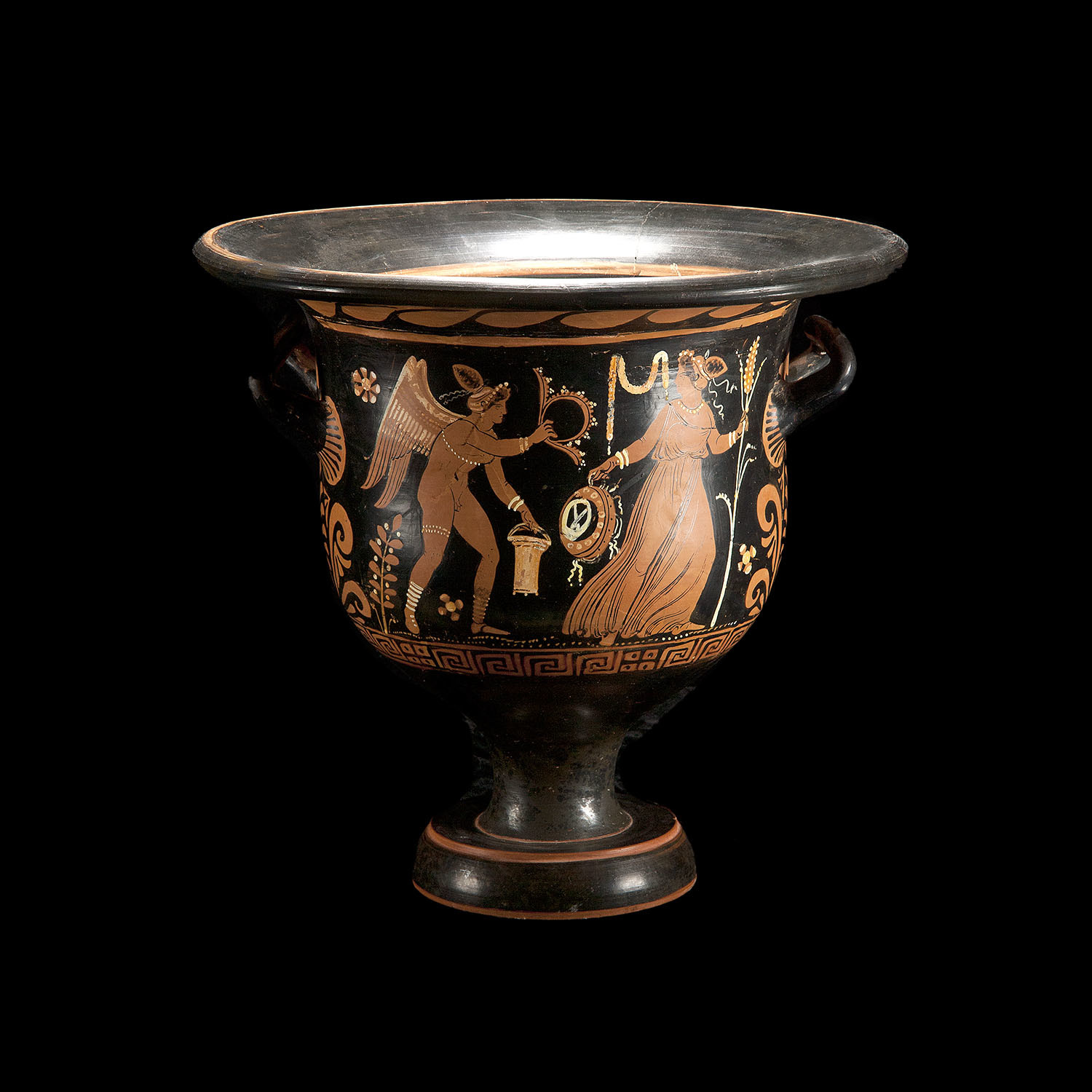- Thread starter
- #661
Eridu Genesis 6)
After this section of the narration, a number of lines are missing which must have explained why the gods An and Enlil – the leaders of the Sumerian pantheon - decide to destroy humanity with a great flood. In the later Atrahasis, the reason is that people become too numerous and too loud and disturb Enlil's rest. In Atrahasis, Enlil sends a drought, then a plague, and then famine to the earth to decrease the population and quiet the roar of the humans but, each time, Enki (god of wisdom and friend of humanity) tells the people what they should do to reverse Enlil's plagues and they are able to go on with their lives as before. It is probable these details also appeared in the earlier Sumerian Flood Story where Enki has the same role.
The story then continues, noting how all the gods swear an oath – presumably that they will not interfere in the An-Enlil decision to destroy humanity – and then the central character of the tale is introduced: Ziudsura, a king of the city of Suruppak and a priest. Since Enki, presumably, has taken the oath not to interfere with the flood along with all the other gods, he cannot warn Ziudsura directly and so speaks to a wall, knowing that Ziudsura on the other side of it will hear him. At this point, there are more lines missing which would have detailed Ziudsura's creation of a large boat, which he filled with animals and "the seed of mankind".
The narrative resumes with a depiction of the flood, which rages for seven days and seven nights, until the seas quiet and Utu (Utu-Shamash, the sun god) appears. Ziudsura makes a hole in the side of the boat, and Utu, in the form of the sun's rays, enters. Ziudsura dutifully makes a sacrifice to the god but what happens after is lost through more missing lines. In the end, An and Enlil seem to have repented of their decision as they are grateful that Ziudsura has preserved their creations. They grant him eternal life in the paradise of the land of Dilmun. Based on fragments of the tablet, it seems the story continued after this seeming conclusion for another 39 lines, but the content is lost.
After this section of the narration, a number of lines are missing which must have explained why the gods An and Enlil – the leaders of the Sumerian pantheon - decide to destroy humanity with a great flood. In the later Atrahasis, the reason is that people become too numerous and too loud and disturb Enlil's rest. In Atrahasis, Enlil sends a drought, then a plague, and then famine to the earth to decrease the population and quiet the roar of the humans but, each time, Enki (god of wisdom and friend of humanity) tells the people what they should do to reverse Enlil's plagues and they are able to go on with their lives as before. It is probable these details also appeared in the earlier Sumerian Flood Story where Enki has the same role.
The story then continues, noting how all the gods swear an oath – presumably that they will not interfere in the An-Enlil decision to destroy humanity – and then the central character of the tale is introduced: Ziudsura, a king of the city of Suruppak and a priest. Since Enki, presumably, has taken the oath not to interfere with the flood along with all the other gods, he cannot warn Ziudsura directly and so speaks to a wall, knowing that Ziudsura on the other side of it will hear him. At this point, there are more lines missing which would have detailed Ziudsura's creation of a large boat, which he filled with animals and "the seed of mankind".
The narrative resumes with a depiction of the flood, which rages for seven days and seven nights, until the seas quiet and Utu (Utu-Shamash, the sun god) appears. Ziudsura makes a hole in the side of the boat, and Utu, in the form of the sun's rays, enters. Ziudsura dutifully makes a sacrifice to the god but what happens after is lost through more missing lines. In the end, An and Enlil seem to have repented of their decision as they are grateful that Ziudsura has preserved their creations. They grant him eternal life in the paradise of the land of Dilmun. Based on fragments of the tablet, it seems the story continued after this seeming conclusion for another 39 lines, but the content is lost.




